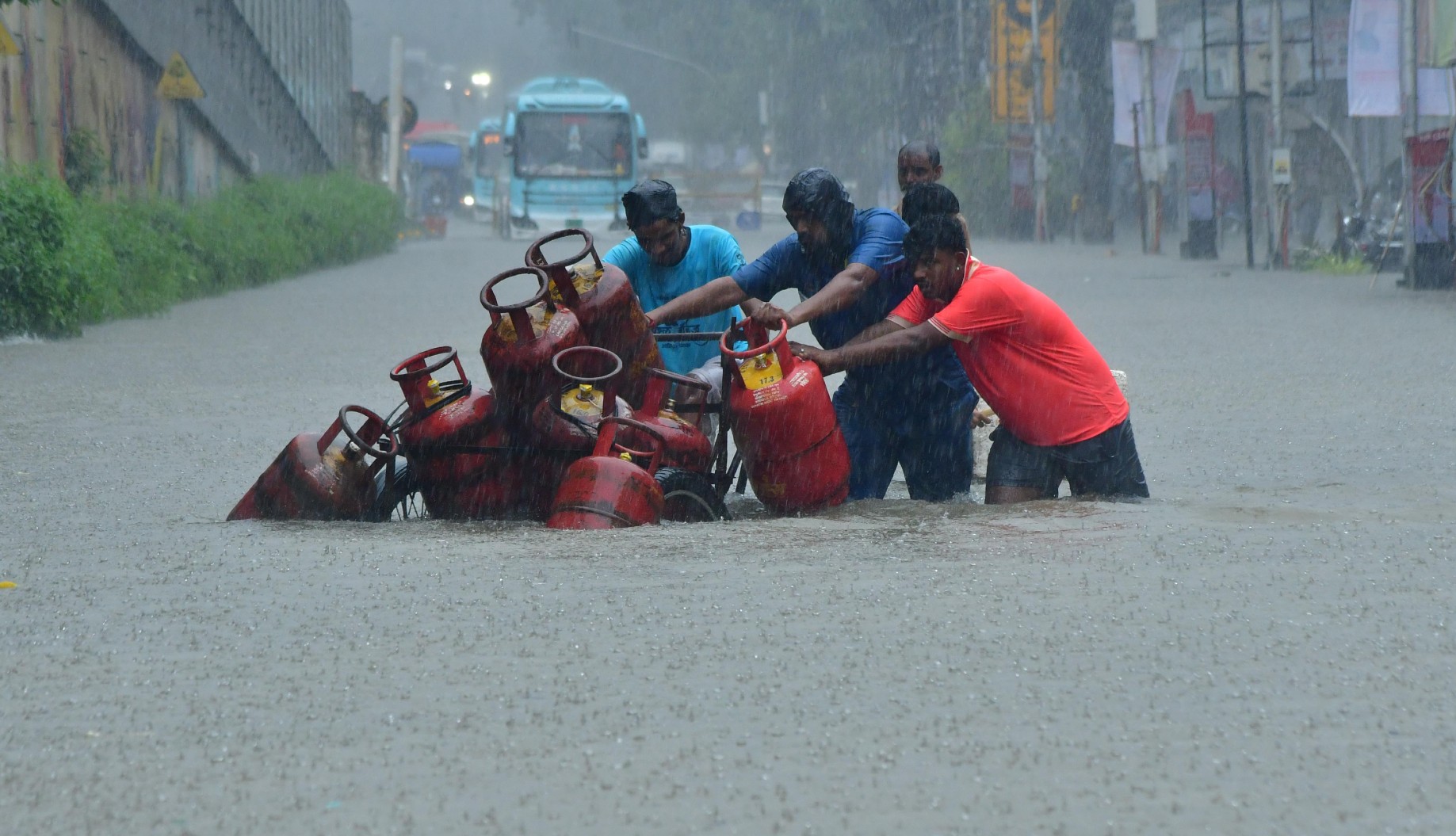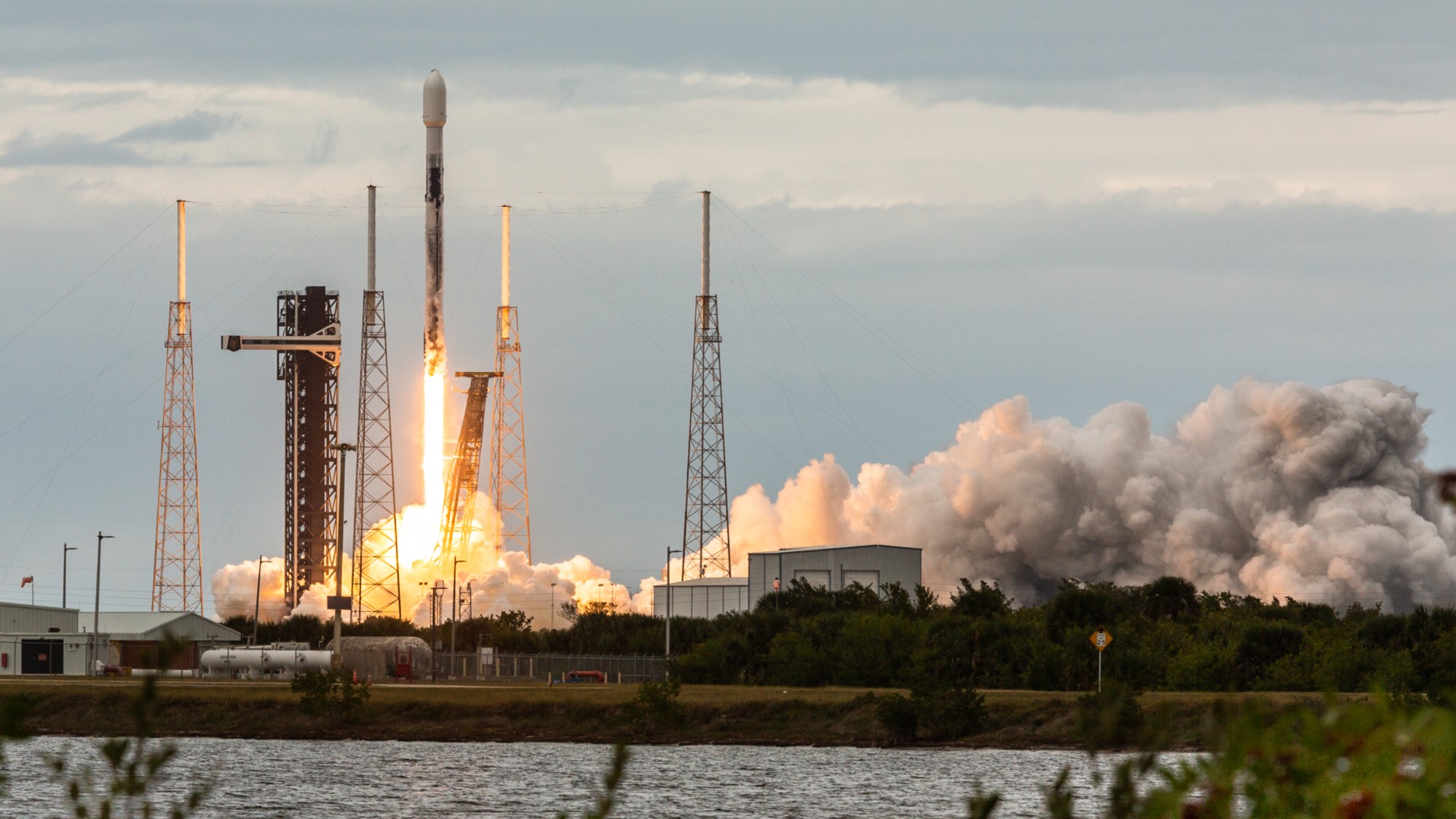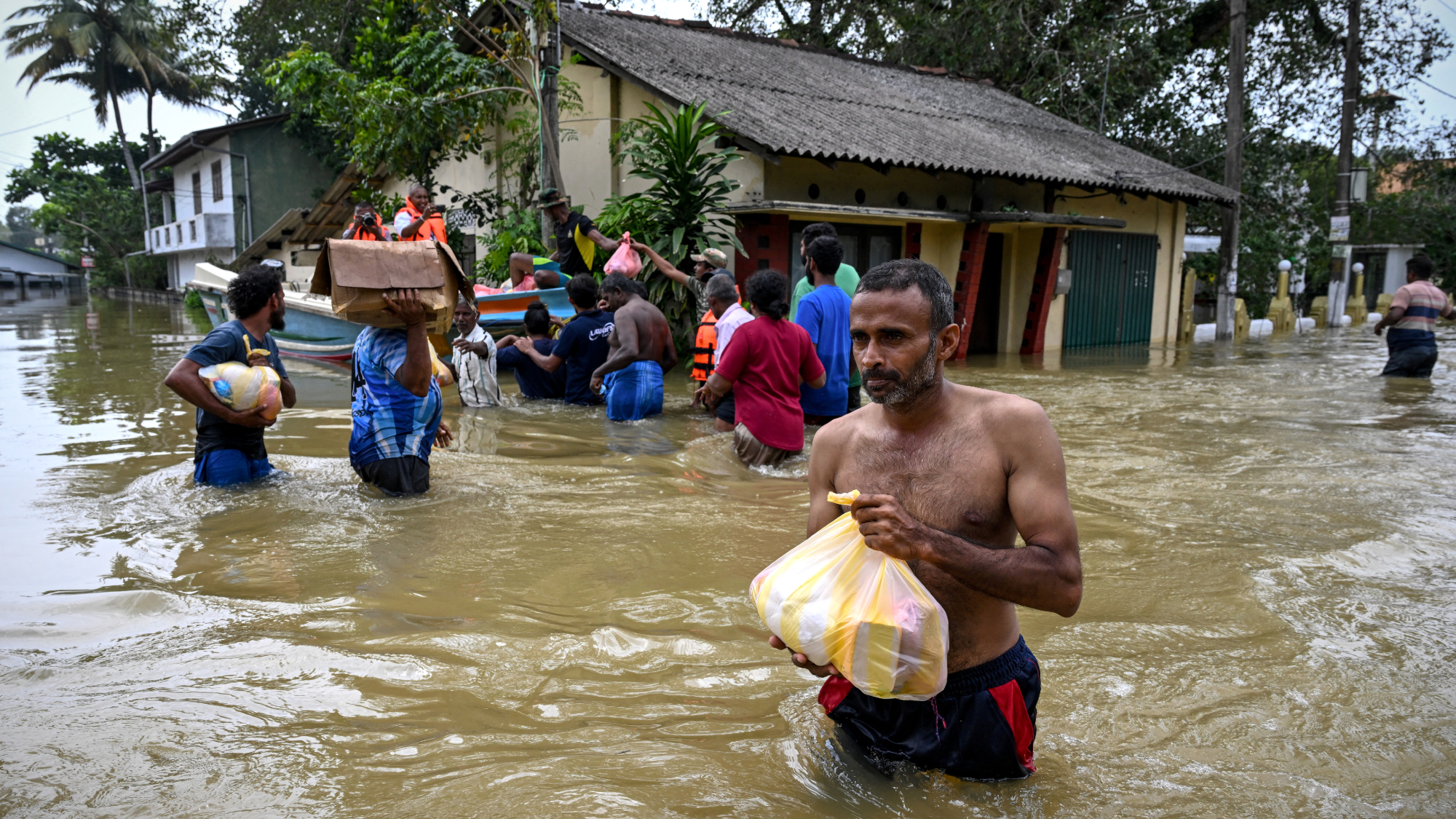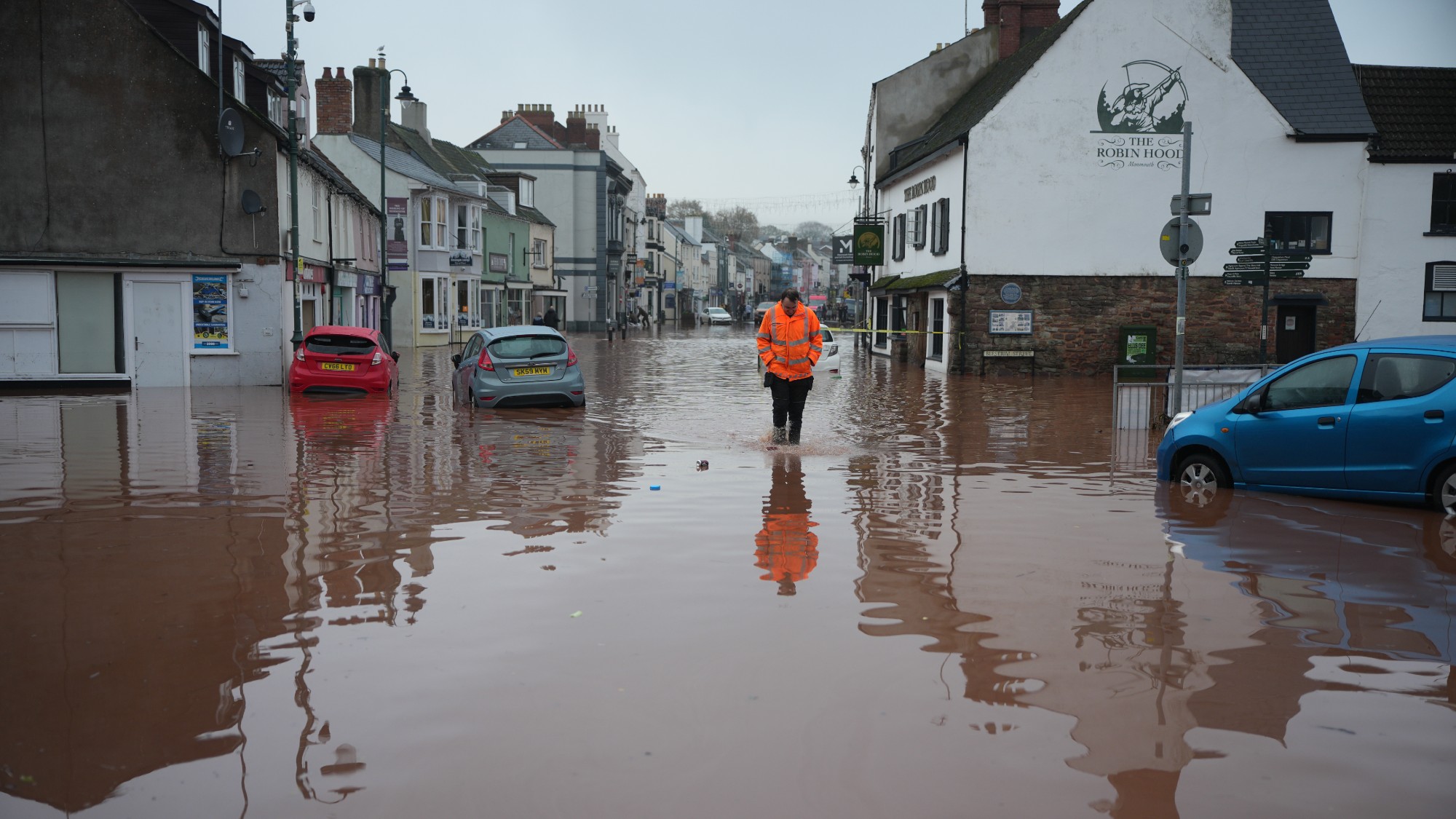Cloudbursts: what are the 'rain bombs' hitting India and Pakistan?
The sudden and intense weather event is almost impossible to forecast and can lead to deadly flash flooding and landslides

Prime Minister Narendra Modi has told his fellow Indians that "nature has been testing us" after cloudbursts caused flash flooding that killed hundreds of people across the north of the country and in neighbouring Pakistan.
What causes cloudbursts?
Usually defined as more than 10cm (roughly 4 inches) of rainfall within an hour over an area less than 30 sq km (11.6 square miles), cloudbursts are caused by a combination of factors characterised by high humidity and low pressure.
When warm, moist air is forced upwards after, for example, encountering a hill or mountain, it cools and condenses, creating large, dense clouds. Once these become over-saturated they burst, releasing their rainfall all at once.
The Week
Escape your echo chamber. Get the facts behind the news, plus analysis from multiple perspectives.

Sign up for The Week's Free Newsletters
From our morning news briefing to a weekly Good News Newsletter, get the best of The Week delivered directly to your inbox.
From our morning news briefing to a weekly Good News Newsletter, get the best of The Week delivered directly to your inbox.
"Sudden and violent", these intense deluges behave effectively like "a rain bomb", said The Associated Press. They "thrive in moisture, monsoons and mountains", all of which are present in India and Pakistan, "making them vulnerable to these extreme weather events".
Why are they dangerous?
The intense rainfall often triggers deadly flooding and landslides, as happened in northern Pakistan and Pakistan-administered Kashmir last week, killing at least 344 people, according to authorities. The death roll includes 24 people from the same family, who were swept away on the eve of a wedding. In Indian-administered Kashmir, at least 60 people have been killed in flash flooding, with 200 more missing.
Flooding resulting from a cloudburst killed more than 6,000 people in 2013 at Kedarnath in the Indian Himalayas.
Cloudbursts are so dangerous in part because there is "no forecasting system anywhere in the world" that can predict exactly where and when they will occur, said Asfandyar Khan Khattak, an official from Pakistan's northwestern Khyber Pakhtunkhwa province.
A free daily email with the biggest news stories of the day – and the best features from TheWeek.com
Are they caused by climate change?
Cloudbursts are a natural phenomenon, but extreme rain events and their related flash-flooding has worsened in recent years as a direct result of climate change.
A recent report from World Weather Attribution, an international group of scientists who study global warming's role in extreme weather, estimated that the 30-day maximum rainfall in northern Pakistan is approximately 22% more intense than it would have been without the impact of human-induced global warming.
Because a warmer atmosphere holds more moisture, "every tenth of a degree of warming will lead to heavier monsoon rainfall", said Mariam Zachariah, lead author of the study and an environmental researcher at Imperial College London.
A 2006 study published in the journal Science found "significant rising trends in the frequency and the magnitude of extreme rain events" in India in the second half of the 20th century as global temperatures have risen. And a study into the 2013 Kedarnath floods, published in Climate Dynamics in 2015, found more than half of the rainfall was likely to be linked to increases in greenhouse gases and aerosol particles in the atmosphere.
Khalid Khan, a former special secretary for climate change in Pakistan and chairman of climate initiative PlanetPulse, said global warming had "supercharged" the water cycle. "In our northern regions, warming accelerates glacier melt, adds excessive moisture to the atmosphere, and destabilises mountain slopes," he said. "In short, climate change is making rare events more frequent, and frequent events more destructive."
-
 ‘Space is one of the few areas of bipartisan agreement in Washington’
‘Space is one of the few areas of bipartisan agreement in Washington’Instant Opinion Opinion, comment and editorials of the day
-
 How robust is the rule of law in the US?
How robust is the rule of law in the US?In the Spotlight John Roberts says the Constitution is ‘unshaken,’ but tensions loom at the Supreme Court
-
 Magazine solutions - December 26-January 2
Magazine solutions - December 26-January 2Puzzles and Quizzes Issue - December 26-January 2
-
 ‘Jumping genes’: how polar bears are rewiring their DNA to survive the warming Arctic
‘Jumping genes’: how polar bears are rewiring their DNA to survive the warming ArcticUnder the radar The species is adapting to warmer temperatures
-
 Environment breakthroughs of 2025
Environment breakthroughs of 2025In Depth Progress was made this year on carbon dioxide tracking, food waste upcycling, sodium batteries, microplastic monitoring and green concrete
-
 Crest falling: Mount Rainier and 4 other mountains are losing height
Crest falling: Mount Rainier and 4 other mountains are losing heightUnder the radar Its peak elevation is approximately 20 feet lower than it once was
-
 Death toll from Southeast Asia storms tops 1,000
Death toll from Southeast Asia storms tops 1,000speed read Catastrophic floods and landslides have struck Sri Lanka, Indonesia, Thailand and Malaysia
-
 Can for-profit geoengineering put a pause on climate change?
Can for-profit geoengineering put a pause on climate change?In the Spotlight Stardust Solutions wants to dim the sun. Scientists are worried.
-
 ‘Like a gas chamber’: the air pollution throttling Delhi
‘Like a gas chamber’: the air pollution throttling DelhiUnder The Radar Indian capital has tried cloud seeding to address the crisis, which has seen schools closed and outdoor events suspended
-
 How will climate change affect the UK?
How will climate change affect the UK?The Explainer Met Office projections show the UK getting substantially warmer and wetter – with more extreme weather events
-
 Can the UK do more on climate change?
Can the UK do more on climate change?Today's Big Question Labour has shown leadership in the face of fraying international consensus, but must show the public their green mission is ‘a net benefit, not a net cost’